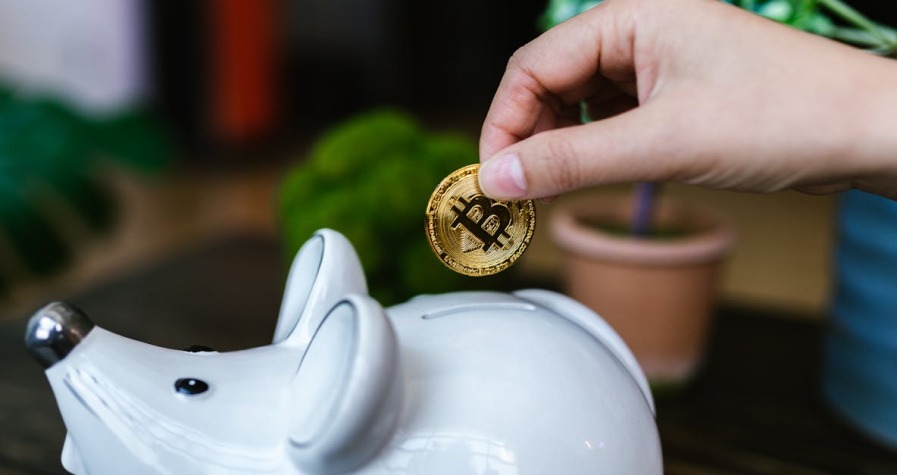The crypto universe can feel overwhelming for newcomers. With thousands of digital assets vying for attention, the first question many beginners wrestle with is simple but critical: should they start with Bitcoin, or dive straight into the world of altcoins?
Bitcoin, the original cryptocurrency, dominates headlines and portfolios alike. Meanwhile, altcoins,every other cryptocurrency that isn’t Bitcoin,promise innovation, explosive growth, and cutting-edge technology. The allure is real, but so are the risks.
For most beginners, the answer leans toward starting with Bitcoin. Its market dominance, liquidity, and relatively lower volatility make it the safest entry point into crypto investing. But that doesn’t mean altcoins should be completely ignored. Understanding the trade-offs between Bitcoin and altcoins, and knowing when and how to diversify, can set the foundation for a smarter, more resilient investment strategy. This article breaks down the key differences, risks, and practical steps to help beginners navigate their first moves in the crypto market.
Key Takeaways
- Bitcoin is the safest entry point for beginners due to its market dominance, higher liquidity, and relatively lower volatility compared to altcoins.
- Altcoins offer higher potential returns and innovative use cases, but come with significantly greater risks including extreme volatility and project failure.
- A Bitcoin-first strategy is recommended, with 70-90% allocated to Bitcoin and only 10-30% to well-researched altcoins after mastering the basics.
- Bitcoin’s fixed supply of 21 million coins and decade-long track record make it a more reliable store of value than most alternative cryptocurrencies.
- Beginners should start small on reputable exchanges, secure their assets in trusted wallets, and only invest money they can afford to lose.
Understanding Bitcoin and Altcoins: The Basics
Before deciding where to put your money, it helps to know what you’re actually buying.
Bitcoin is the first and most well-known cryptocurrency. Launched in 2009 by an anonymous creator known as Satoshi Nakamoto, Bitcoin was designed as a decentralized digital currency,no banks, no middlemen, just peer-to-peer transactions on a public ledger called the blockchain. Its supply is capped at 21 million coins, which creates scarcity similar to gold. Over the years, Bitcoin has evolved into more than just digital money: many investors view it as a store of value or “digital gold,” a hedge against inflation and traditional financial systems.
Altcoins, on the other hand, refer to every cryptocurrency that isn’t Bitcoin. The term is short for “alternative coins,” and the category is massive,spanning thousands of projects with vastly different goals, technologies, and levels of maturity. Some well-known altcoins include Ethereum, which pioneered smart contracts and decentralized applications: Solana, known for fast transaction speeds: and Cardano, which emphasizes academic research and sustainability. Each altcoin has its own unique use case, technological features, and growth potential.
While Bitcoin focuses on being a reliable, decentralized form of money, altcoins often aim to solve specific problems or introduce new capabilities,whether that’s enabling decentralized finance (DeFi), powering Web3 applications, or improving transaction efficiency.
What Makes Bitcoin Different From Other Cryptocurrencies
Bitcoin stands apart from altcoins in several fundamental ways.
First, there’s scarcity. Bitcoin’s hard cap of 21 million coins is baked into its code and can’t be changed. This fixed supply is one reason people compare it to gold,it’s deflationary by design, and as demand grows, so does its potential value.
Second, Bitcoin enjoys unmatched market dominance. It’s the largest cryptocurrency by market capitalization, accounting for a significant portion of the entire crypto market’s value. This dominance translates into broader adoption, more trading pairs on exchanges, and deeper liquidity than any other digital asset. When institutions, governments, or mainstream media talk about crypto, they’re usually talking about Bitcoin first.
Finally, Bitcoin has the longest operational history and strongest network effect. It’s been running continuously since 2009 with no downtime, hacks at the protocol level, or successful attacks on its network. That track record provides a level of security and trust that newer altcoins simply can’t match. The more people use and hold Bitcoin, the more secure and valuable the network becomes,a positive feedback loop that’s hard to replicate.
The Case for Bitcoin as a Beginner’s First Investment
For someone just entering the crypto space, Bitcoin offers a more forgiving starting point than most alternatives.
One of the biggest advantages is ease of entry. Bitcoin is supported on virtually every major cryptocurrency exchange and trading platform. Whether someone’s using Coinbase, Kraken, Binance, or a newer app, Bitcoin is always front and centre. It’s also easier to find educational resources, wallets, and community support centered around Bitcoin, which matters when you’re learning the ropes.
Another key factor is lower risk. While no crypto investment is risk-free, Bitcoin is generally more resilient to extreme price swings and total project failures compared to altcoins. It’s been stress-tested over more than a decade, surviving multiple bear markets, regulatory crackdowns, and technological challenges. The likelihood of Bitcoin going to zero is far lower than the odds facing most altcoins, many of which fade into obscurity within a few years.
Bitcoin is also widely regarded as digital gold,a portfolio anchor in the crypto world. Just as traditional investors hold gold to preserve wealth and hedge against market turmoil, many crypto investors use Bitcoin as a core holding that provides stability and long-term growth potential. It’s not trying to do everything: it does one thing exceptionally well: be a secure, decentralized store of value.
Market Dominance and Liquidity Advantages
Liquidity is one of those concepts that sounds technical but has very real, practical implications.
Bitcoin has the highest trading volume and liquidity of any cryptocurrency. That means buyers and sellers are always active in the market, making it easy to execute trades quickly without causing major price swings. For a beginner, this is crucial. If you need to sell Bitcoin,whether to take profits, cut losses, or rebalance your portfolio,you can do so almost instantly at a fair market price.
Altcoins, especially smaller or newer ones, often suffer from low liquidity. Trying to sell a large position in a low-volume altcoin can move the market against you, resulting in worse prices and higher slippage. In some cases, it might be difficult to find a buyer at all.
Bitcoin’s deep liquidity also makes it less susceptible to market manipulation. Smaller altcoins, with thinner order books, can be more easily influenced by “whales”,large holders who can move prices dramatically with a single trade. Bitcoin’s size and widespread ownership make it harder for any single entity to control the market.
Lower Volatility Compared to Most Altcoins
Let’s be clear: Bitcoin is still volatile. Double-digit percentage swings in a single day aren’t uncommon, and bear markets can be brutal.
But compared to most altcoins, Bitcoin’s volatility is relatively tame. Altcoins can and do experience 30%, 50%, or even 70% drops in short periods, especially during market downturns. Some altcoins lose 90% or more of their value and never recover.
Bitcoin’s price movements, while still significant, tend to be more predictable and less extreme over time. For a beginner who’s not yet comfortable with the emotional rollercoaster of crypto investing, starting with Bitcoin can help build confidence and experience without the whiplash that comes with more speculative assets.
Why Some Beginners Consider Altcoins
Even though Bitcoin’s advantages, altcoins hold undeniable appeal,especially for those willing to take on more risk in exchange for potentially higher rewards.
Higher Potential Returns and Growth Opportunities
One of the main reasons beginners are drawn to altcoins is the possibility of outsized gains. During bull markets, certain altcoins can skyrocket by hundreds or even thousands of percent in a matter of months. Stories of early Ethereum investors or those who bought Solana under $10 fuel the temptation to search for “the next big thing.”
Bitcoin, while historically a strong performer, is unlikely to deliver the same explosive short-term returns it did in its early years. As the largest and most established crypto, its growth tends to be steadier and more incremental. For someone looking to turn a small investment into life-changing money quickly, altcoins can seem like the better bet.
Of course, this potential comes with a catch,most altcoins that promise huge returns never deliver, and many lose most of their value. But the dream of catching a moonshot keeps the allure alive.
Diverse Use Cases and Innovation
Bitcoin was built to be money. Altcoins, on the other hand, are often designed to do much more.
Ethereum, for example, introduced smart contracts,self-executing agreements that run on the blockchain without intermediaries. This innovation opened the door to decentralized finance (DeFi), non-fungible tokens (NFTs), and a whole ecosystem of decentralized applications. Other altcoins focus on solving specific problems: faster transactions, lower fees, privacy, interoperability between blockchains, or powering the next generation of the internet (Web3).
For beginners who are excited by technology and want to invest in projects with real-world utility or transformative potential, altcoins offer diversity and innovation that Bitcoin doesn’t. Each project represents a different bet on the future of blockchain technology, which can be intellectually stimulating and financially rewarding,if you pick the right ones.
Key Risks Beginners Face With Altcoins
For every success story in the altcoin world, there are dozens of cautionary tales. The risks are real, and beginners need to understand them before jumping in.
Increased Volatility and Price Swings
Altcoins are notorious for their wild price swings. A coin can double in value one week and lose half its worth the next. This volatility can be exhilarating when prices are climbing, but it’s also emotionally exhausting and financially dangerous.
For beginners who lack experience managing risk or controlling their emotions during market turbulence, altcoin volatility can lead to panic selling, poor timing, and significant losses. The psychological toll of watching your investment drop 40% overnight is not something everyone is prepared for.
Lower Liquidity and Project Failure Risks
Many altcoins have far lower liquidity than Bitcoin, making it harder to enter or exit positions without affecting the price. During market downturns, liquidity can dry up entirely, leaving holders unable to sell at reasonable prices.
Beyond liquidity issues, there’s the very real risk of project failure. Like startups, most altcoins never achieve meaningful adoption or long-term success. Some projects are poorly managed, others face regulatory challenges, and many simply can’t compete in an increasingly crowded market. It’s not uncommon for altcoins to lose 95% or more of their value and become effectively worthless.
Unlike Bitcoin, which has a proven track record and institutional backing, most altcoins are speculative bets on unproven technology and teams. For beginners, distinguishing between legitimate projects and hype-driven schemes is incredibly difficult.
Building a Balanced Approach: Bitcoin First or Diversification?
So, should beginners put all their eggs in the Bitcoin basket, or is there room for altcoins from the start?
Most experienced investors and guides recommend a Bitcoin-first strategy. The idea is simple: start with Bitcoin to learn the fundamentals of crypto investing,how wallets work, how to secure your assets, how markets behave, and how to manage volatility. Once you’ve built that foundation and gained some experience, you can gradually explore well-researched altcoins.
This approach reduces risk while still giving beginners exposure to the broader crypto market. It also prevents the common mistake of chasing hype or investing in projects you don’t fully understand.
That said, small, diversified allocations in major, established altcoins,like Ethereum,can be appropriate for beginners who’ve done their assignments. The key is to start conservatively and only expand into altcoins after mastering the basics, including wallet security and custody practices.
How Much Should Beginners Allocate to Bitcoin vs Altcoins
A common rule of thumb among crypto investors is to keep the majority of your portfolio in Bitcoin,often somewhere between 70% and 90%,with limited exposure to altcoins in the 10% to 30% range.
This conservative allocation ensures that your portfolio is anchored by Bitcoin’s relative stability and lower risk, while still allowing you to capture potential upside from altcoins. The exact split depends on your risk tolerance, investment goals, and how much time you’re willing to spend researching individual projects.
Altcoins should be treated like high-risk venture capital plays. They’re speculative, and you should only invest money you can afford to lose entirely. Diversifying across several established altcoins, rather than going all-in on one, can help manage risk.
As you gain experience and confidence, you can adjust these allocations,but starting with a Bitcoin-heavy portfolio is generally the safest bet for beginners.
Practical Steps for Beginners Getting Started
Ready to take the plunge? Here’s how to get started the right way.
First, start small. There’s no need to invest large sums right away. Dip your toes in with an amount you’re comfortable losing, and use that initial investment as a learning experience. Crypto is volatile and unpredictable, so treat your first steps as tuition for financial education.
Second, use reputable platforms. Stick with well-known, regulated exchanges like Coinbase, Kraken, Gemini, or Binance. These platforms have strong security measures, user-friendly interfaces, and customer support,critical features for beginners. Avoid obscure exchanges or platforms with limited track records.
Third, secure your assets. Once you’ve purchased Bitcoin (or any crypto), learn how to store it safely. While keeping small amounts on an exchange is convenient, larger holdings should be transferred to a trusted wallet,either a hardware wallet (like Ledger or Trezor) or a reputable software wallet. Never share your private keys or seed phrases with anyone, and enable two-factor authentication on all accounts.
Fourth, learn market behaviour before expanding. Spend time observing how Bitcoin reacts to news, market cycles, and macroeconomic trends. Read up on the fundamentals, follow credible sources, and avoid chasing short-term hype. Only after you feel comfortable navigating Bitcoin should you consider branching into altcoins.
Finally, only invest money you can afford to lose. This can’t be stressed enough. Crypto is high-risk, and even Bitcoin,even though its relative stability,can experience sharp declines. Never invest funds you need for living expenses, emergency savings, or other financial obligations.
Conclusion
For most beginners, sticking with Bitcoin is the smartest move. It offers exposure to the crypto market’s upside while minimizing many of the risks that come with altcoins,lower volatility, greater liquidity, and a proven track record. Bitcoin serves as a solid foundation, giving newcomers time to learn, build confidence, and understand how the market works.
That doesn’t mean altcoins should be off-limits forever. As beginners gain experience and develop a deeper understanding of blockchain technology and market dynamics, limited, diversified exposure to well-researched altcoins can be added to the mix. But this should be done carefully, with a clear understanding of the risks involved.
The crypto space rewards patience, discipline, and continuous learning. By starting with Bitcoin and expanding thoughtfully over time, beginners can build a resilient portfolio that balances growth potential with manageable risk. In a market full of noise and hype, sometimes the simplest strategy is the best one.
Frequently Asked Questions
Should beginners start with Bitcoin or altcoins?
Most beginners should start with Bitcoin. It offers lower volatility, higher liquidity, and a proven track record compared to altcoins. Bitcoin provides a safer entry point to learn crypto fundamentals before exploring more speculative investments.
What percentage of a crypto portfolio should be Bitcoin vs altcoins?
A common recommendation is keeping 70–90% of your portfolio in Bitcoin, with 10–30% in altcoins. This Bitcoin-heavy allocation provides stability while allowing exposure to altcoin growth potential, depending on your risk tolerance.
Why is Bitcoin considered less risky than altcoins?
Bitcoin has the longest operational history since 2009, highest market dominance, and deepest liquidity. It’s less susceptible to project failure and extreme volatility compared to most altcoins, making it more resilient during market downturns.
What are the main advantages of investing in altcoins?
Altcoins offer higher potential returns and diverse use cases beyond Bitcoin’s store-of-value function. Projects like Ethereum enable smart contracts, DeFi, and NFTs, providing innovation and explosive growth opportunities for risk-tolerant investors.
How do I safely store Bitcoin as a beginner?
Small amounts can stay on reputable exchanges like Coinbase or Kraken. For larger holdings, transfer Bitcoin to a hardware wallet like Ledger or Trezor. Always enable two-factor authentication and never share your private keys.
Can Bitcoin still provide significant returns compared to altcoins?
While Bitcoin’s explosive early-stage returns are unlikely to repeat, it still offers strong long-term growth potential with lower risk. As the largest cryptocurrency, Bitcoin delivers steadier gains compared to altcoins’ high-risk, high-reward volatility.




